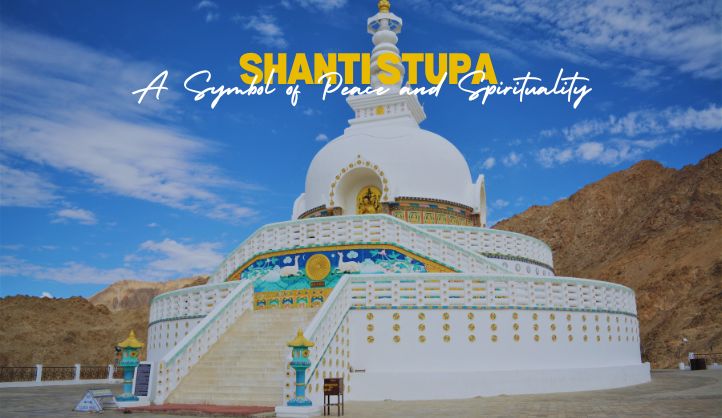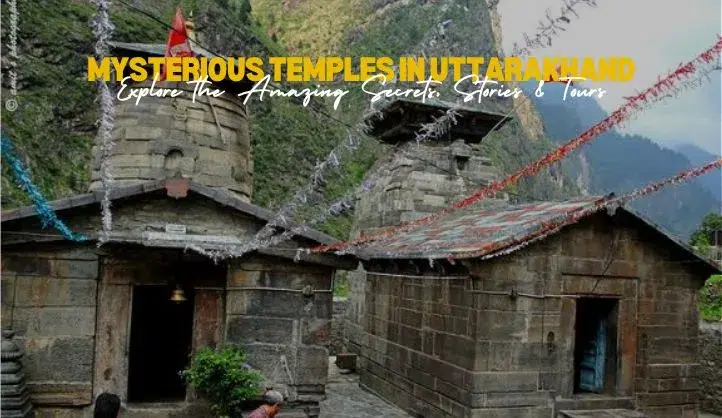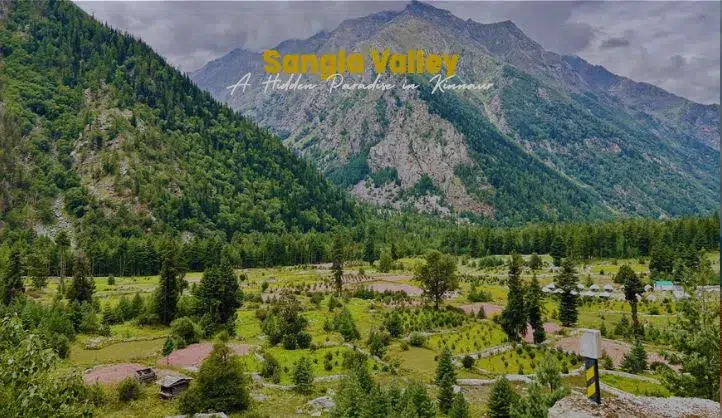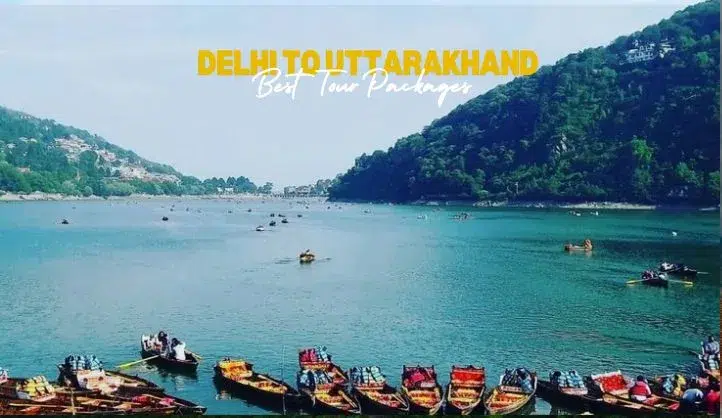The Shanti Stupa, a remarkable structure that blends spirituality, architecture, and serenity, has become a beacon of peace for visitors around the world. Positioned at significant locations, this stupa carries a deep cultural and religious significance, attracting pilgrims and tourists alike. In this comprehensive article, we will explore the origins, architectural brilliance, cultural importance, and the experience of visiting the Shanti Stupa, along with its locations in various countries.
The Shanti Stupa is a Buddhist structure that serves as a monument dedicated to peace. The word “Shanti” translates to “peace” in Sanskrit and several other Indian languages, making the stupa a symbol of universal peace and harmony. These stupas are typically situated in locations of cultural and historical importance, with their serene environment providing a tranquil retreat for reflection, meditation, and spiritual growth.
In addition to its religious significance, the Shanti Stupa is often seen as a pilgrimage site for Buddhists and a popular tourist destination due to its architectural beauty and peaceful ambiance.
The History and Origins of Shanti Stupa
The Shanti Stupa as a concept that originated in Japan in the 20th century, but the idea itself draws from ancient Buddhist traditions. The first Shanti Stupa was built by Japanese Buddhist monk Dr. Yoshio Iwamoto and other Buddhist leaders in the 1970s, specifically to promote peace and goodwill among people across the world. Its design was inspired by the ancient stupas of India, where the Buddha’s relics were traditionally enshrined.
The construction of these stupas was part of the broader efforts to celebrate peace in the aftermath of World War II, and they quickly became symbols of reconciliation between nations. With the spread of the stupa idea, the concept began to take root in other countries as well, with major stupa-building projects taking place in India, Nepal, and Bhutan.
The Role of the Japanese Monk
Dr. Yoshio Iwamoto, along with his followers, played an integral part in spreading the message of peace globally through the establishment of Shanti Stupas. His vision was to create a space where people from different backgrounds and nations could gather in peace, meditate, and reflect on the shared values of humanity.
Architectural Design of the Shanti Stupa
The design of the Shanti Stupa is a fusion of traditional Buddhist architecture and modern aesthetics. Its most prominent feature is the dome-like structure, known as the “anda,” which houses relics or symbols representing the teachings of the Buddha.
The stupa is often surrounded by prayer wheels and adorned with large statues of the Buddha. A central, towering spire signifies the pathway to enlightenment, guiding visitors towards a higher spiritual state. The stupa’s design is minimalist yet majestic, exuding an aura of calm and spirituality. Most Shanti stupas are built with white marble, signifying purity and peace, and they are strategically positioned in locations that offer panoramic views, symbolizing a connection between the heavens and the earth.
The entrance is typically marked by stairs, leading to a meditation hall beneath the stupa. Visitors are encouraged to walk around the stupa in a clockwise direction, engaging in a ritual of reverence and contemplation. The surrounding area often features lush gardens, making it an ideal spot for meditation and quiet reflection.
Shanti Stupa: A Symbol of Peace and Harmony
One of the most profound aspects of the Shanti Stupa is its symbolism. It represents not only the teachings of Buddha but also the universal desire for peace and harmony in a world marred by conflict and division. Each Shanti Stupa is dedicated to promoting peace and unity, regardless of race, religion, or nationality. By visiting these stupas, people are reminded of the importance of inner peace and mutual respect.
Buddhist Teachings and Peace
The stupa also holds significant Buddhist teachings, such as the Four Noble Truths and the Eightfold Path, both of which emphasize the cessation of suffering and the path to enlightenment. These teachings are believed to help individuals achieve a peaceful state of mind, leading to a deeper understanding of themselves and their place in the world.
Prominent Shanti Stupas Around the World
Shanti Stupa in Leh, Ladakh, India
The Shanti Stupa in Leh, located in the high-altitude region of Ladakh, India, is one of the most well-known and visited Shanti stupas in the world. Built-in 1991 by Japanese Buddhist monks and the Ladakhi community, this stupa symbolizes the effort to bring peace to the region. It was also constructed to commemorate 2500 years of Buddhism.
The stupa is located atop a hill, offering spectacular views of Leh, the Indus River, and the surrounding Himalayan range. Visitors are often mesmerized by the stunning sunset and the calm that pervades the area. The Shanti Stupa in Leh has become a significant pilgrimage destination for Buddhists and travelers seeking spiritual solace.
Shanti Stupa in Tokyo, Japan
In Tokyo, the Shanti Stupa is a beautiful and peaceful site located in the Setagaya district. Though smaller in size compared to its counterparts in India and Nepal, it plays a vital role in symbolizing peace in Japan. The stupa’s significance is heightened by its historical and cultural context, particularly after World War II, when Japan embraced the message of peace and nonviolence.
Shanti Stupa in Pokhara, Nepal
The Shanti Stupa in Pokhara, Nepal, stands proudly on the top of a hill, offering a panoramic view of the city and the Himalayan peaks, including the Annapurna Range. Built by the Japanese Buddhist community, this stupa is a tribute to the teachings of Buddha and serves as a symbol of peace and goodwill. Its tranquil environment attracts both locals and tourists who come to meditate and enjoy the natural beauty of the surrounding area.
Significance of Shanti Stupa in Buddhist Culture
The Shanti Stupa holds great spiritual significance in Buddhist culture. These stupas are not just monuments but also sacred sites where people come to pay homage to the Buddha and reflect on the core teachings of Buddhism. Stupas, in general, are important in Buddhist rituals, as they symbolize the Buddha’s teachings and his path to enlightenment.
The Shanti Stupa, in particular, carries the unique message of global peace. Its presence serves as a reminder of the importance of reconciliation and harmony in a world that often finds itself divided by various conflicts. For Buddhists, visiting a Shanti Stupa is an opportunity to practice mindfulness and meditation, aiming to achieve inner peace.
The Role of Shanti Stupa in Promoting Global Peace
The Shanti Stupa is more than just a religious monument; it serves as a global symbol of peace, transcending national boundaries. In an era of increasing geopolitical tensions, the stupa acts as a constant reminder of the need for dialogue, understanding, and unity. Various world leaders and spiritual leaders have visited these stupas, reinforcing their message of harmony.
The Shanti Stupa also plays an essential role in cross-cultural exchange. It encourages individuals from different parts of the world to come together in shared moments of peace and reflection. By participating in the rituals and observing the tranquil atmosphere, visitors can experience a sense of unity that helps bridge cultural divides.
Visiting the Shanti Stupa: What to Expect
A visit to the Shanti Stupa is a spiritually enriching experience. Upon arriving, visitors are greeted by the towering structure of the stupa, often accompanied by prayer flags that flutter in the breeze. The surroundings are typically serene, with the gentle sound of wind chimes and the rustling of trees creating an ambiance conducive to reflection.
Visitors can take part in the rituals of walking around the stupa, turning prayer wheels, and sitting in silence for meditation. It is an opportunity to disconnect from the hustle and bustle of daily life and reconnect with oneself. Whether you’re a devout Buddhist or someone seeking peace, a visit to the Shanti Stupa offers a space for personal growth and tranquility.
How to Reach the Shanti Stupa
Reaching the Shanti Stupa depends on its location, but many of these stupas are situated in scenic, often remote areas, making them both challenging and rewarding to visit.
- Shanti Stupa in Leh: The stupa is located about 5 kilometers from the main market in Leh. Visitors can take a taxi or trek up the hill for a more adventurous experience.
- Shanti Stupa in Pokhara: The stupa is located on a hilltop, and visitors can either hike up or take a vehicle to the base of the hill.
- Shanti Stupa in Tokyo: Easily accessible by public transport, visitors can reach the stupa through the Setagaya line.
Nearby Places to Explore Around Shanti Stupa
The Shanti Stupa, located in serene environments like Leh, Ladakh, is surrounded by some breathtaking landscapes and significant cultural sites. Whether you’re a nature enthusiast, a history lover, or seeking spiritual solace, the region offers a variety of nearby attractions to enhance your visit. Here are some must-see places near the Shanti Stupa:
1. Leh Palace
Located just 3 kilometers from the Shanti Stupa, Leh Palace is one of the most iconic landmarks in Leh. The palace, built in the 16th century by King Sengge Namgyal, offers a glimpse into Ladakh’s royal history. The architecture is reminiscent of the Potala Palace in Tibet, and visitors can enjoy panoramic views of the town of Leh, the Stok Range, and the surrounding mountains.
Highlights:
- Historical architecture
- Stunning views of Leh town
- Museum showcasing royal artifacts
2. Hemis Monastery
Hemis Monastery, around 45 kilometers from Leh, is one of the largest and most famous Buddhist monasteries in Ladakh. Known for its annual Hemis Festival, which celebrates the birth of Guru Padmasambhava, this monastery is a must-visit for those interested in Ladakh’s rich spiritual heritage. The monastery houses a vast collection of ancient Tibetan artifacts, scriptures, and paintings.
Highlights:
- Tibetan Buddhist architecture
- Hemis Festival (usually in June or July)
- Beautiful murals and sacred artifacts
3. Pangong Lake
Though a bit farther from Leh (about 160 kilometers), Pangong Lake is one of the most stunning natural wonders in Ladakh. The lake, situated at an altitude of 4,350 meters, is famous for its shimmering blue water and mesmerizing surroundings. The lake is a popular spot for photography, and its changing colors during the day are a sight to behold. Visitors can enjoy camping, boating, or simply soaking in the stunning views.
Highlights:
- Crystal-clear blue waters
- Scenic drive through rugged landscapes
- Camping and photography
4. Thiksey Monastery
Located approximately 17 kilometers from Leh, Thiksey Monastery is one of the largest and most beautiful monasteries in Ladakh. It is perched on a hill, offering panoramic views of the Indus Valley and the surrounding mountains. The monastery, which resembles the Potala Palace, houses a 15-meter-high statue of Maitreya Buddha, and visitors can explore the monastery’s chapels, prayer halls, and stupas.
Highlights:
- Stunning views of the Indus Valley
- Maitreya Buddha statue
- A peaceful atmosphere ideal for meditation
5. Nubra Valley
Nubra Valley, located around 150 kilometers from Leh, is a vast valley bordered by the Karakoram mountain range. The valley is known for its sand dunes, where visitors can enjoy a camel ride on the famous Bactrian camels. The valley is also home to ancient monasteries like Diskit Monastery and beautiful villages like Hunder and Turtuk.
Highlights:
- Camel rides on the sand dunes
- Visit to Diskit and other monasteries
- Unique cultural experiences in remote villages
6. Magnetic Hill
About 30 kilometers from Leh, Magnetic Hill is an intriguing phenomenon where vehicles appear to roll uphill against gravity when parked in a specific spot. This optical illusion, coupled with the barren landscape, creates an unforgettable experience. The site also offers panoramic views of the surrounding mountains and valleys.
Highlights:
- Optical illusion of objects moving uphill
- Panoramic views of the surrounding terrain
- A fun and quirky stop for visitors
7. Tso Moriri Lake
Tso Moriri, located around 240 kilometers from Leh, is another beautiful high-altitude lake in Ladakh. Known for its pristine beauty and tranquility, the lake is surrounded by snow-capped mountains and barren landscapes. It is part of the Tso Moriri Wetland Conservation Reserve, which is home to various migratory birds and wildlife species.
Highlights:
- Serene lake surrounded by mountains
- Bird watching and wildlife photography
- Camping by the lake
8. Ladakh Hall of Fame
For those interested in the region’s military history, the Ladakh Hall of Fame, situated around 4 kilometers from Leh, is an informative museum dedicated to the soldiers who fought in the Kargil War. It houses photographs, documents, and war memorabilia that give visitors a glimpse into the bravery of the Indian Army.
Highlights:
- Kargil War history and memorabilia
- Photographs and stories of soldiers
- An educational experience for visitors of all ages
9. Zanskar Valley
Zanskar Valley, about 105 kilometers from Leh, is a remote and stunning region that is famous for its rugged terrain, deep gorges, and tranquil beauty. Known for its adventure tourism, including trekking, rafting, and mountaineering, Zanskar Valley is a haven for those seeking solitude and raw natural beauty.
Highlights:
- Popular trekking routes like the Chadar Trek (frozen river trek)
- Remote and pristine landscapes
- Unique Buddhist monasteries like Zongkhul Monastery
10. Khardung La Pass
Khardung La Pass, about 40 kilometers from Leh, is one of the highest motorable passes in the world. At an altitude of 5,359 meters, it offers panoramic views of the Karakoram Range and Nubra Valley. The pass is a popular spot for adventure enthusiasts and offers a thrilling ride through challenging terrain.
Highlights:
- High-altitude motorable pass
- Scenic views of the Karakoram Range
- Adventure and photography opportunities
Conclusion
The Shanti Stupa is much more than a physical structure; it represents the universal desire for peace, serenity, and enlightenment. Whether located in India, Nepal, Japan, or other parts of the world, each Shanti Stupa serves as a reminder of the importance of inner peace and harmony in our global community.
FAQs About the Shanti Stupa
1. What is the Shanti Stupa?
The Shanti Stupa is a Buddhist structure symbolizing peace, built to promote global harmony, spiritual reflection, and meditation. The word “Shanti” means peace in Sanskrit, and the stupa serves as a place where visitors can experience tranquility and connect with the teachings of the Buddha.
2. Where are Shanti Stupas located?
Shanti Stupas are located in various countries around the world. Some of the most prominent ones include:
- Leh, Ladakh, India
- Pokhara, Nepal
- Tokyo, Japan
- Dharamsala, India
- Lumbini, Nepal (the birthplace of Buddha)
Each stupa is situated in a peaceful location, often on hilltops or high altitudes, offering panoramic views of the surrounding landscapes.
3. What is the significance of the Shanti Stupa?
The Shanti Stupa symbolizes peace and harmony, transcending religious and cultural boundaries. It was built to promote global peace and to serve as a reminder of the Buddha’s teachings, which emphasize the cessation of suffering, the pursuit of enlightenment, and the importance of compassion and mindfulness.
4. Can non-Buddhists visit the Shanti Stupa?
Yes, the Shanti Stupa is open to all visitors, regardless of their religious background. It is a place for peace, reflection, and spiritual growth, welcoming people from all walks of life. Many visitors, including tourists, come to the stupa to experience its serene environment and reflect on its message of peace.
5. What activities can visitors do at the Shanti Stupa?
At the Shanti Stupa, visitors can:
- Walk around the stupa in a clockwise direction as a sign of reverence.
- Spin the prayer wheels, which are believed to release prayers for peace.
- Meditate in the surrounding peaceful areas.
- Enjoy panoramic views and take part in quiet reflection.
- Attend Buddhist ceremonies or rituals if available.
6. How do I reach the Shanti Stupa in Leh, Ladakh?
The Shanti Stupa in Leh is located approximately 5 kilometers from the city center. Visitors can either take a taxi or hire a vehicle to reach the stupa or opt for a short hike up to the hill where the stupa is situated. The uphill journey offers stunning views of the surrounding areas.









